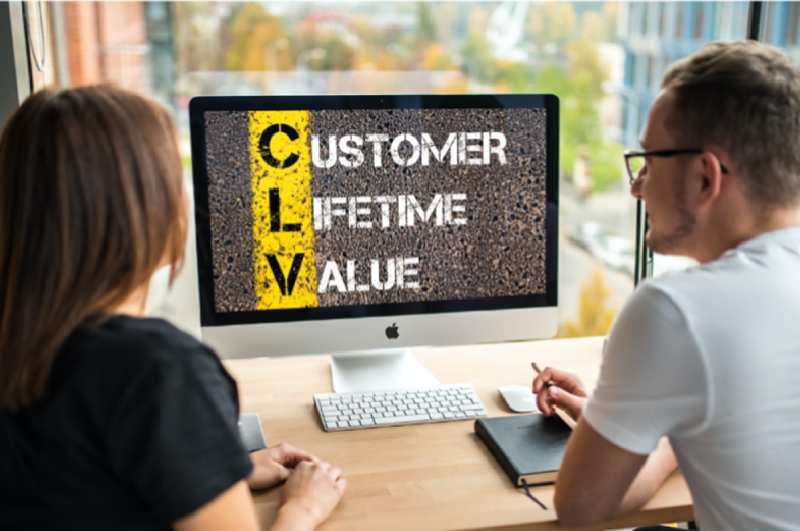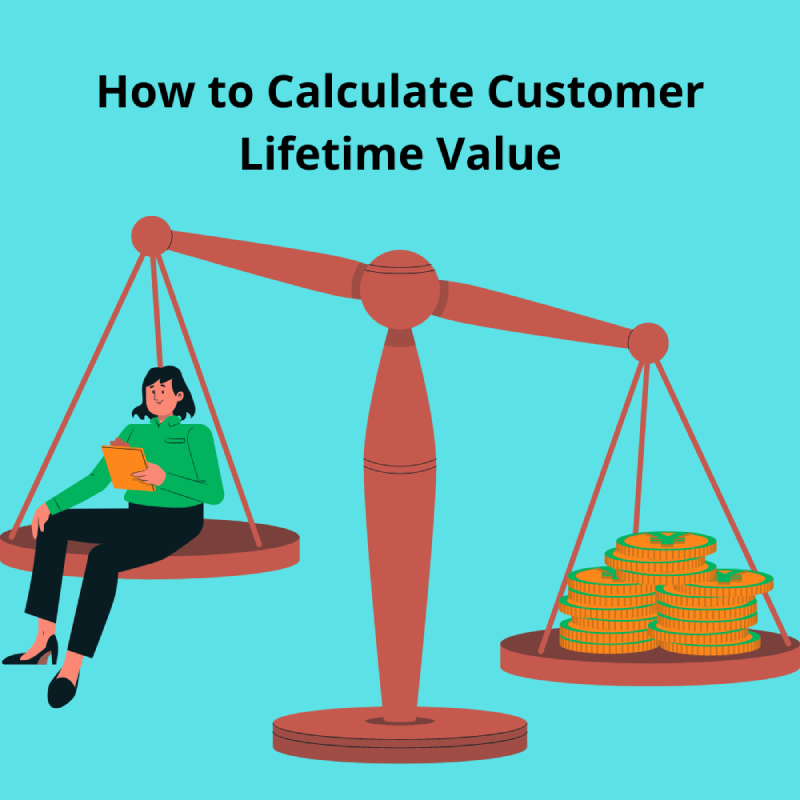What do Costco’s Jim Sinegal and Amazon’s Jeff Bezos have in common?
They both perfected the art of focusing on Customer Lifetime Value (CLV or CLTV) instead of pursuing short-lived profits. The results? Both created super-successful businesses, raking in billions of dollars annually.
If you want to build customer loyalty and spur business growth for the long term, you must learn the ropes of CLV. Easy? No. Essential? Yes.
What is Customer Lifetime Value?

Customer Lifetime Value refers to the money a customer is likely to spend in your business or your products during their lifetime.
Lifetime, in this context, refers to the period a customer will interact with your business.
CLV considers a customer’s monetary value and compares it to the predicted customer lifespan.
The goal of CLV is to determine the total value of a customer’s purchases, including past and unrealized future purchases.
Why Should You Care About Customer Lifetime Value?
Evaluating your CLV is important. Here's why:
Asking The Right Customer Lifetime Value Questions is Vital
Unlocking the true potential of Customer Lifetime Value takes time, but you can start small.
The first step toward creating a customer-centric business is asking yourself critical questions about CLV.
The right CLV answers, combined with post-purchase upsells and cross-sells, can help maximize customer value and increase profits
Below is a rundown of customer lifetime value questions you should seek answers to if you want to create a business strategy that provides a positive experience, builds long-term relationships, and brings in high profits.
1. How are you computing your CLV?

You can calculate CLV at the company or individual level.
The company-level model gives you the average CLV across your entire customer base. The individual-level formula computes CLVT for each customer that deals with your business.
It is important to remember that all customers aren’t the same when calculating customer lifetime value. You’ll, therefore, want to use a formula that breaks down CLV by customer.
Estimating CLVT using the company-level model can help you gauge your business’ health. It can be misleading, though, if all your customers don’t follow the same sales process. The solution? Calculating CLV at the individual level.
Individual-level CLVs allow you to achieve a couple of things, including:
Armed with these marketing metrics, you create a data-backed customer acquisition campaign and boost your profit margin — something that’s quite challenging to achieve with company-level CLVs.
2. Is Your CLV Historical, Predictive, or a Mix of Both?
CLV can either be predictive or historical.
Historical customer lifetime value uses past data to forecast a customer’s value. It doesn’t consider whether the existing customer will continue dealing with your business or not.
Inversely, predictive CLTV, as the name suggests, forecasts the buying pattern of new and existing customers.
We’ve since established that calculating individual-level CLV works best. If you’re estimating CLV at the individual level, make sure it’s predictive CLV.
Historical CLV has two drawbacks:
3. How Much of CLV Have you Achieved vs. Predicted Future Revenue?
If your CLV is predictive, you'll want to decide when to start calculating the customer value.
It is important to remember that relying exclusively on future-predicted revenue prevents you from comparing a high actively current customer's projected revenue with previous inactive customers.
You can't, for instance, compare an active low spender with an inactive big spender from two years ago.
The best approach would be to calculate predicted CLTV from when a customer connects and starts trading with your business.
4. How Far Into the Future Does Your CLV Go?
It doesn’t make business sense to base your customer lifetime value calculation on an indefinite future.
When calculating predictive CLV, you must be realistic. Determine how far into the future you can forecast.
When using predicted CLV to evaluate, for instance, a marketing campaign, it is essential to understand the assumptions built into the calculation.
Sure, CLV is a good rule of thumb, but you should also consider how the market will change in two to five years. The risks of projecting far into the future include:
The best approach is to predict customer lifetime value within a realistic future — one or two years into the future.
5. How Far Back Does Your CLV Go?
The same way you can't calculate CLV based on an indefinite future, you can't go far back when calculating lifetime value.
For instance, if your business's history spans six decades, does it make sense to include the first customer to trade with your company in your CLV calculation model? Is the customer still interacting with your business?
When deciding how far back you can calculate customer value, it is important to consider your business type, product, or services.
A brand loyalist who bought the first generation iPhone in 2007, for instance, may still be buying Apple products to date.
It would be best to work with a realistic and relevant timeframe when including old clients in your customer lifetime value calculation.
6. How Consistent is Your Predictive CLV?
The standard CLVT model assumes that market conditions will remain constant during a customer’s lifetime.
This is a risky assumption that gets riskier as time goes by. Even if your customers continue buying from you, you’re likely to experience pressure on your prices.
As your customer base grows, several things are likely to happen:
As a result, you may have to reduce your prices. You’re better off, therefore, reviewing predictive CLVT regularly. You’ll also want to track how your pricing model, product launches, and marketing campaigns affect the customer value.
7. How Does Your CLV Address Different Customer Lifespans?
The next customer lifetime value question is whether your plan accounts for varying customer tenures.
Let’s say you’re calculating CLV for individual customers, prospecting two years into the future, and want to consider each customer’s history with your business.
In such situations, it may not be logical to compare a customer who started interacting with your company five years ago with one who joined one year ago.
The time considered for the first customer will be seven years — six historical years and one predictive year. You’ll account for two years for the second customer — one historical year and one year of prediction.
If a customer’s lifetime is longer than your prediction time, the best approach is to consider the total duration of your prediction period and ignore the value generated after that.
One more thing;
Embrace Good Advice
Sometimes, you’re better off listening than talking.
Customers often offer solid advice on what you can do to improve your business and serve their needs better — and you can boost your CLVT by heeding the advice.
For instance, you can collect product reviews to help get valuable insights into how customers feel about your product or service. Allow them room to share their honest opinion that could help improve your business.

Some customers may give negative feedback and advice on what you can do to make things better at the same time. If their concerns are genuine, consider looking into their complaints.
The more you listen to your customers, the easier it is to satisfy them and increase your retention rate.
The Bottom Line
Understanding customer lifetime value analysis guides sales campaign planning and monitoring. This analysis directly impacts business processes and growth.
Addressing key customer lifetime value queries helps ascertain if your business model is scalable and profitable or if strategy adjustments are necessary for further scaling your operations.
A data-driven CLV strategy enhances the customer experience by identifying and dealing with inefficiencies in the purchasing cycle.
Analyzing touchpoints determines improvement areas, ensuring smoother transactions and increased customer satisfaction.
Simplifying the buying process increases customer trust and loyalty. This streamlined experience boosts repeat business, positive reviews, and referrals, strengthening a brand's market presence.
A seamless purchase process fosters loyalty and the overall lifetime value of customers.
